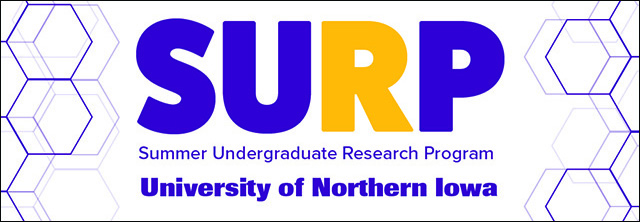
2023 Summer Undergraduate Research Program (SURP) Symposium
Location
ScholarSpace, Rod Library, University of Northern Iowa
Presentation Type
Poster Presentation (UNI Access Only)
Document Type
poster
Keywords
Wide area networks (Computer networks);
Abstract
Overlay networks are widely used in modern computing to connect devices through logical links instead of physical ones. They help manage the complexity of physical networks, allowing engineers to create logical topologies with desired properties. However, these overlay networks are often deployed in environments prone to faults. Self-stabilizing overlay networks are proposed as a solution to restore the network to a stable state after such faults occur. Despite existing research on this topic, one limitation is the unrealistic assumption of unlimited communication bandwidth. In reality, logical links share the same physical links, so adding more logical links does not increase the overall bandwidth. To address this, we propose a node-capacitated model that limits the size and number of messages each node can send and receive. In this study, we explore the use of the node- capacitated model through software simulations.
Start Date
28-7-2023 11:00 AM
End Date
28-7-2023 1:30 PM
Event Host
Summer Undergraduate Research Program, University of Northern Iowa
Faculty Advisor
Andrew Berns
Department
Department of Computer Science
Copyright
©2023 Winfred Afeaneku, Andrew Berns, Ph.D, Weston Kuchenberg, Sara Leisinger, and Cedric Liu
File Format
application/pdf
Recommended Citation
Afeaneku, Winfred; Berns, Andrew; Kuchenberg, Weston; Leisinger, Sara; and Liu, Cedric, "Understanding Self-Stabilizing Node-Capacitated Overlay Networks Through Simulation" (2023). Summer Undergraduate Research Program (SURP) Symposium. 8.
https://scholarworks.uni.edu/surp/2023/all/8
Understanding Self-Stabilizing Node-Capacitated Overlay Networks Through Simulation
ScholarSpace, Rod Library, University of Northern Iowa
Overlay networks are widely used in modern computing to connect devices through logical links instead of physical ones. They help manage the complexity of physical networks, allowing engineers to create logical topologies with desired properties. However, these overlay networks are often deployed in environments prone to faults. Self-stabilizing overlay networks are proposed as a solution to restore the network to a stable state after such faults occur. Despite existing research on this topic, one limitation is the unrealistic assumption of unlimited communication bandwidth. In reality, logical links share the same physical links, so adding more logical links does not increase the overall bandwidth. To address this, we propose a node-capacitated model that limits the size and number of messages each node can send and receive. In this study, we explore the use of the node- capacitated model through software simulations.


